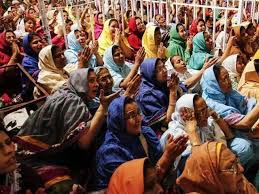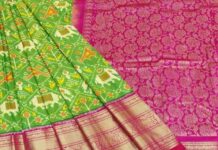 NEW DELHI: A group representing the Dawoodi Bohra women has sought to distance itself from the practice of female genital mutilation, asserting that it conducts circumcision on its girls which is “different” and “harmless”.
NEW DELHI: A group representing the Dawoodi Bohra women has sought to distance itself from the practice of female genital mutilation, asserting that it conducts circumcision on its girls which is “different” and “harmless”.
The Dawoodi Bohra Women’s Association for Religious Freedom (DBWRF) was responding to a report released by a campaign led by the survivors of the female genital mutilation or cutting (FGM/C), which indicated that 75 per cent of the Bohra girls surveyed were subjected to the practice.
“Female Genital Mutilation (FGM) and Female Circumcision (FC) – also called khafz (or khafd) – are entirely different from each other. Khafz is a harmless cultural and religious practice, unique to the Dawoodi Bohra community. We reiterate that there is no place for any kind of mutilation in the Dawoodi Bohra culture,” according to a statement from secretary, DBWRF, Samina Kanchwala.
The group claimed that its members were campaigning in Rajkot, Mumbai, Indore and Ahmedabad to spread awareness on FGM, adding that it was “strongly against FGM or any practice or act that demeans, oppresses or subjugates women”.
The report, titled “The Clitoral Hood a Contested Site: Khafd or Female Genital Mutilation in India”, asserts that “khafd”, as practiced by the Bohras, is circumcision or mutilation and as per the definition of the World Health Organization (WHO), it counts as FGM.
According to the WHO, FGM comprises “all procedures that involve the altering or injuring of female genitalia for non-medical purposes and is recognized internationally as a violation of the human rights of girls and women”.
The survey, which has testimonies of 94 proponents and opponents of FGM among the Bohras, as well as doctors and traditional cutters, records that while the community maintains that “khafd” is a minor cut or “a nick on the clitoral hood”, in reality, what is practiced is far more grievous.
“Most women subjected to khafd in India undergo Type 1 FGM or clitoridectomy which includes partial or total removal of the clitoral hood or clitoris. Very few younger women may be subjected to Type 4 FGM which includes pricking, piercing or cauterization,” Lakshmi Anantnarayan, writer of the report, said.
Dr Sujaat Vali, interviewed in the study, has been quoted as saying that often the circumstances in which the girls are forced to undergo “khafd” at the hands of traditional cutters result in more damage to the genitals than intended under the custom.
As per the study, 97 per cent women who remembered their FGM/C experience from childhood recalled it as painful.
Those who have undergone “khafd” have reported painful urination, physical discomfort, difficulty in walking and bleeding immediately following the procedure.
Nearly 33 per cent women subjected to “khafd” in the study said that it had negatively impacted their sexual life.
Many experienced fear, anxiety, depression, low self-esteem after undergoing FGM.-PTI






